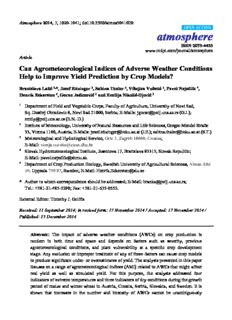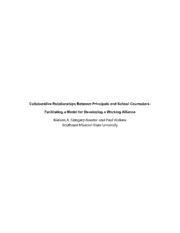
ERIC EJ1119083: Collaborative Relationships between Principals and School Counselors: Facilitating a Model for Developing a Working Alliance PDF
Preview ERIC EJ1119083: Collaborative Relationships between Principals and School Counselors: Facilitating a Model for Developing a Working Alliance
Collaborative Relationships Between Principals and School Counselors: Facilitating a Model for Developing a Working Alliance Melissa A. Odegard-Koester and Paul Watkins Southeast Missouri State University 2 Abstract The working relationship between principals and school counselors have received some attention in the literature, however, little empirical research exists that examines specifically the components that facilitate a collaborative working relationship between the principal and school counselor. This qualitative case study examined the unique perspective for building a leader-member relationship between the principal and school counselor. Specifically, the case study examined the experiences of the working relationship of a principal and school counselor in a rural Midwestern elementary school. Data analysis revealed that the following three shared themes emerged: student-centered focus, role differentiation, and trust. From these themes and their descriptions a collaborative working relationship resulted. As a result, the principal school counselor model evolved. Implications for principals and school counselors as well as future research are presented. Keywords: principal, school counselor, collaboration 3 Collaborative Relationships Between Principals and School Counselors: Facilitating a Model for Developing a Working Alliance Successful schools today are predicated on student outcomes (Hattie, 2012; Darling-Hammond, 2010). Leadership in these schools that serves the growth of others is required to navigate the storms of social and cultural shifts, epidemics of addiction, poverty, human isolation and despair combined with the urgency of academic success for everyone (Greenleaf, 2002; Reeves, 2006). Relationship building among the many stakeholders in the school’s community cannot be over appreciated. Henrik Ibsen, a nineteenth century dramatist, put it this way, “A community is like a ship; everyone ought to be prepared to take the helm” (Forbes Leadership Library, 1995, p. 2). The principal cannot navigate alone. One leadership partner often overlooked is the school counselor. The purpose of this research study is to examine the principal-counselor relationship and the impact a professional alliance can bring to a small rural school district. Academic achievement does not occur in a vacuum; many factors, both external and internal, compete for student attention (Dahir & Stone, 2003; Fitch & Marshall, 2004). Creating space at school where each student feels safe, valued, and competent present special challenges for those responsible. Commitment by leadership to manage this growing complexity requires a strong alliance between the principal and counselor (Hallinger, 2005). Together at the helm, they better serve the whole child and begin navigating a community focused on results one child at a time. A case study design set in a real-world context was chosen because it allows a deeper appreciation for the subject (Yin, 2012; Merriam & Tisdell, 2016). The case is 4 bounded by a single rural elementary school. Such a setting offers a unique perspective for building a leader-member relationship between the principal and school counselor. Schools serving small communities find it difficult to recruit and retain quality staff (Stone, 1990; Monk, 2007; LaTurno Hines, 2002). As a result, principals must be observant and savvy in finding teachers who demonstrate the capacity to grow into a specialized role such as counseling. Developing and fostering rare talent among faculty promotes sustained continuity so important for rural schools (LaTurno Hines, 2002). This study considers three questions that guide the inquiry into establishing and sustaining a principal-counselor relationship: 1) How do the principal and counselor of a rural school develop trust and respect for each other in a professional relationship? 2) How do the principal and counselor communicate expectations, concerns and beliefs about their relationship? 3) How do the principal and counselor share decision-making? Leader-membership theory sets the framework for this study. In the mid-70s researchers began to look critically at leader-follower relationships (Northouse, 2016; Seer & Chopin, 2012). These researchers were curious about the inconsistencies followers demonstrated when they rated a leader’s leadership styles. Some followers, for instance, rated a leader’s task oriented style higher while others rated the same behavior as low. What attributes to the inconsistency (Seer & Chopin, 2012)? The inconsistency researchers found was explained by the degree of relationship the leader and follower experienced. Followers were discovered as in-group personnel, while others were considered the out-group (Dansereau, Graen, & Haga, 1975). Much of the current counseling literature advocates that the school counselor must take on a stronger leadership role. Grimes, Haskins and Paisley (2013) report 5 from their study that it is crucial for counselors to insert themselves as social justice advocates who support both school and community values among their students. “The experience of rural school counselor, social justice advocates is made meaningful by deep community connection with generational limitations, community investment amidst socio-economic loss, and both value and compromise personally and professionally” (Grimes, et al., p. 47). As social justice advocate and leader, counselors must sacrifice much of their professional and social capital. Dixon, Tucker and Clark (2010) continue the theme of socially just counseling and advocacy. As leaders in their school counselors are asked to advance the access to academic and social supports for both the advantaged and disadvantaged (College Board, 2009). As leader-advocates they are asked to secure resources for mediating rights and services that students may otherwise not receive (Steele, 2008). Rural education compared to more populated regions face challenges unique to its community (LaTurno Hines, 2002; Sutton, 2002; Byun, Meece, & Irvin, 2012). Children attending rural schools are more likely to experience a narrow curriculum and limited social services. Rural communities; however, do have strong ties among its citizens (Elder & Conger as cited in Byun, et al., 2012); as a result they may be able offset family or financial problems. Counselors in small rural schools must be creative at finding resources available beyond the school. Because of the communal nature of a rural culture (LaTurno Hines, 2002), counselors are more likely to find partners within the religious and community networks than their counter parts in larger communities (Sutton, 2002). 6 A cycle of poverty in rural areas reduces student aspirations toward higher education or career opportunities (Gibbs, 2000; Iceland, 2013). Sutton’s (2002). Research confirms the notion that counselors must become acclimated to not only the cycle of poverty, but the resistance to idea that social problems of homelessness, drugs, and domestic violence are “out there, but not here in our quiet town” (p. 207). A team of committed school stakeholders that include the principal, faculty, staff, and community members must confront the challenges of rural culture facing a school counselor (Cohen-Vogel, Goldring, & Smreker, 2010). Because a counselor by today’s standards is asked to take on the roles of social justice advocate and leader, the role of counselor may often come into conflict with that of the administrator’s role as designated organizational head. Trusty and Brown (2005) cast the counselor advocate as school actor, autonomous in thinking and behavior. Such autonomy puts that person at odds with the principal. As an advocate the counselor must protect the rights of students against zero tolerance policies or demand resources for services and special programs over other budget priorities (Trusty & Brown). While much of the current literature may imply competing purposes between administrative leadership and that of a counselor advocating social justice issues, the theoretical counter weight for this research offers a an alternate narrative. Dyadic relationships defined by the leader-member exchange (LMX) theory provide a key underpinning for this case study. Earlier it was discussed that rural school principals must maintain close professional ties with productive faculty. One critical relationship is between the principal and counselor. High quality exchanges that occur with the leader and member are predicated on trust and mutual dependence. These 7 exchanges become stronger and more deeply held over time (Yukl, G. 2002; Schriesheim, Castro, Zhou, & Yammarino, 2001; Graen & Uhl-Bien, 1995). While literature around the development of leader-member exchanges grows, it remains unclear how sustained leader-member relationships grow (Sparrowe, & Liden, 1997; Bauer, Green, & Bauer, 1996; Janssen, & Van Yperen, 2004). The implication of leader-member relations is that trusted employees grow seamlessly in their connections with a supervisor. However, it is more likely that the dyadic relationships have ebb and flow as any close relationship has. Attitudes shift as both individuals mollify their independence with a desire to become closer (Fairhurst, 1993). How well shifts in attitudes are mediated over time so trust and support is not lost as relationships mature remains a question. As a result, more research on the issue of mediating sustained LMX relationships will bring fidelity to this question. Graen and Uhl-Bien (1995) expanded the earlier research on leader-member exchange (LMX). Their work revealed that the quality of leader and follower’s relationship contributed to higher quality performance of workers and less turnover among staff. The quality of the relationship also contributed to greater work activity and a heightened sense of accomplishment for both leader and follower. Rural teachers and counselors are relatively younger and less experienced than their peers in larger communities (Monk, 2007). Retaining such a fragile workforce demands that their school leader builds a strong relationship with all of the members. We argue here that the relationship between a building principal and counselor is particularly important to maintain. It is the counselor who, according to LaTurno Hines (2002), “[facilitates] the change needed to remove the systemic barriers that keep all children from achieving 8 success” (p. 192). Through the qualitative interviews between a rural Midwestern principal and school counselor, the researchers hope to illuminate further the importance of the collaborative relationship and its impact on the overall school environment through this case study. Method A qualitative approach in this study was chosen in order to further the understanding of the principal-counselor relationship and gain both the individual and collective meaning from the selected participants. Utilizing a qualitative methodology for this study allowed for an open-ended format of exploration where a variety of possibilities emerged because the participants were not bound solely to closed questions. Specifically, in order to understand the phenomena of the principal-counselor relationship, it was important to attend to the experience of a principal and counselor who work closely together in the same school. This case was bounded by both time (six months) and place (a rural Midwestern elementary school). We also utilized multiple date points (LMX7, School Counselor Self-Advocacy Questionnaire, and semi- structured interviews) to determine the in-depth picture of the relationship between the principal and school counselor. This approach follows Lincoln and Guba’s (1985) case study structure: statement of the problem, context, issues and “lessons to be learned.” This single case study allowed the researchers to further determine the emergent relational themes consistent with the principal and counselor experience. Data Collection In the context of this study, the researchers sought to construct the experiences of the elementary principal and school counselor as well as examine the critical steps 9 for building a professional relationship between an elementary principal and school counselor in a small rural school. Through the principal and counselor interviews, observations and professional-role questionnaires, reliability and trustworthiness was assured. The project used multiple approaches to establish trustworthiness and an analytical generalization of the case presented. Participants Lincoln and Guba (1985) discussed the concept of generalization as operating within a natural paradigm. In a natural paradigm, data are viewed as emerging from an interaction between the investigator and participants. Personal understandings may be reached in the form of “naturalistic generalizations” in a qualitative framework. The researchers concluded that selecting a small number of participants for the study would allow an integration of a thorough interview process as well as gain a deeper understanding of the context in this case. Selection criteria. The name and e-mail address of the elementary school counselor was obtained from a Midwestern regional comprehensive university’s counseling program post-graduate email database that was provided by the alumnus prior to graduation. The recruitment process began by e-mailing a letter to the elementary school counselor and the elementary school principal stating the purpose of the research, amount and length of the interview rounds, expectations of participating, and information on how to contact the researchers. The participants were given instructions on how to volunteer or to request for further information. Once participants were given further information regarding the study, informed consent forms were also provided and they were given an opportunity to review, ask questions, and agreed to 10 participate in the study. Purposeful sampling was used to obtain the participants for the study. Both the principal and counselor interviewed for this study represent a rural district challenged by unemployment, increasing illicit drug use, and poverty. Demographic data. The participants included two Caucasian women between the ages of 40-55. The two participants selected were from a rural Midwestern school district. One participant identified as the elementary school principal and the other participant identified as the elementary school counselor. For the study, the participants were given pseudonyms to safeguard their identity. From this point forward the elementary school principal will be referred to as Sandy and the elementary school counselor will be referred to as June. The participants were selected based on identifying as having an effective principal-counselor relationship which included the following components: mutual trust and respect; principal-counselor communication; shared vision and decision-making (College Board, 2009). Data Sources The researchers engaged the participants (elementary principal and school counselor) in a semi-structured interview, interview protocol (Appendix 1). In these semi-structured interviews, the researchers provided generalized questions that were then followed by supplemental questions for clarification. To enhance the understanding of the collaborative working relationship between Sandy and June, the researchers also administered a Leader-Member Exchange Seven (LMX7, Appendix 2) to measure the school counselor-principal relationship. June also responded to the School Counselor Self-Advocacy Questionnaire to measure the role as school advocate and partner. Both the LMX7 and School Counselor Self-Advocacy (Appendix 3) instruments have validity
The list of books you might like

Mind Management, Not Time Management

Credence

Better Than the Movies

Believe Me

Risk Factors in Depression
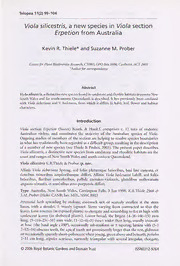
Viola silicestris, a new species in Viola section Erpetion from Australia
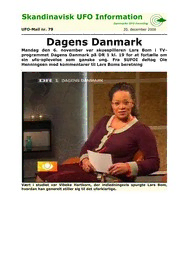
UFO Mail No 079 2006
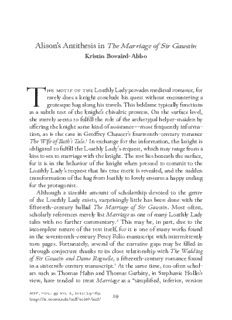
Alison's Antithesis in The Marriage of Sir Gawain

Process and Plant Safety
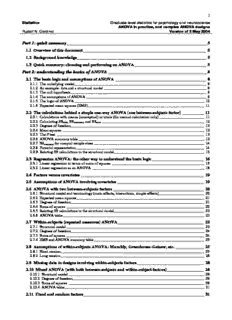
understanding the basics of ANOVA
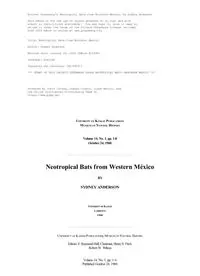
Neotropical Bats from Western Mexico by Sydney Anderson
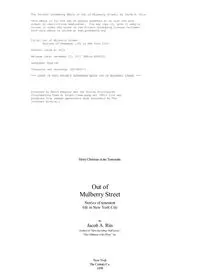
Out Of Mulberry Street by Jacob A Riis
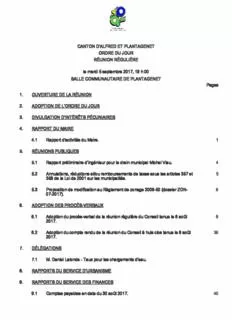
CANTON D'ALFRED ET PLANTAGENET ORDRE DU JOUR RÉUNION RÉGULIÈRE le mardi 5
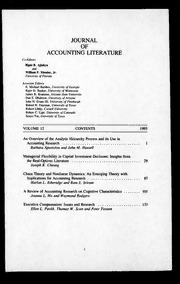
Journal of Accounting Literature 1993: Vol 12 Table of Contents

Hallmarked and Others by John Galsworthy
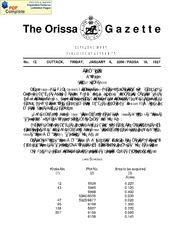
Odisha Gazette, 2005-12-27, No. 12
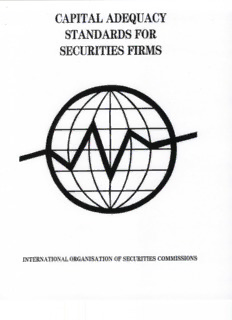
Capital Adequacy Standards for Securities Firms - International

A Singer from the Sea by Amelia E Barr
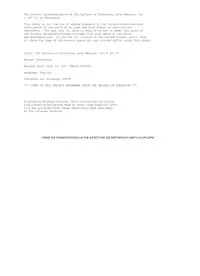
The Gallery of Portraits Volume II

The Campers Out by Edward S Ellis

LibsVSCons6
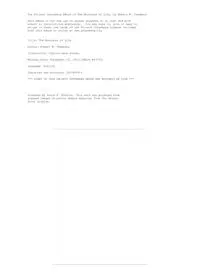
The Business of Life by Robert W Chambers

